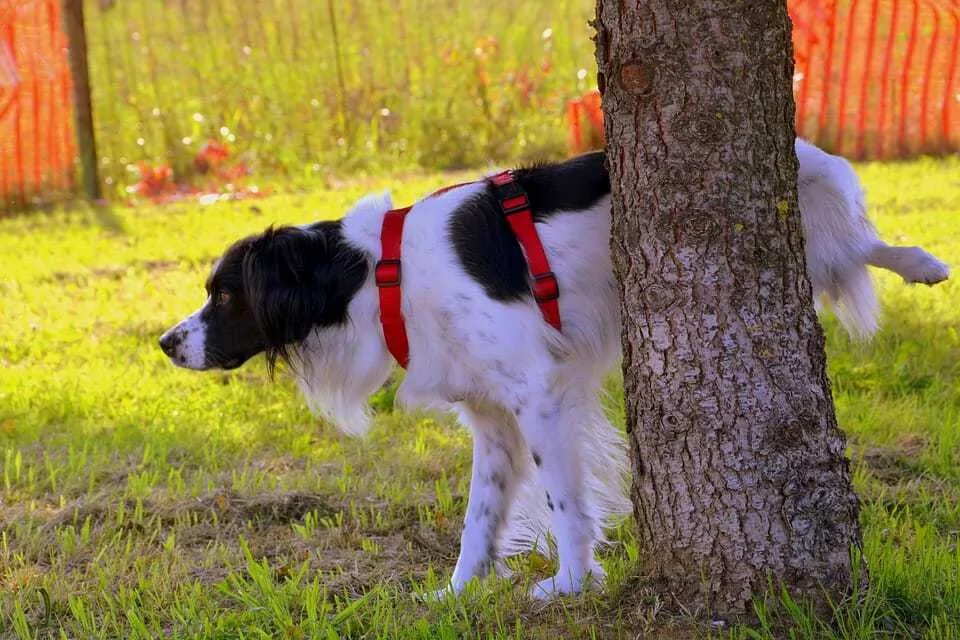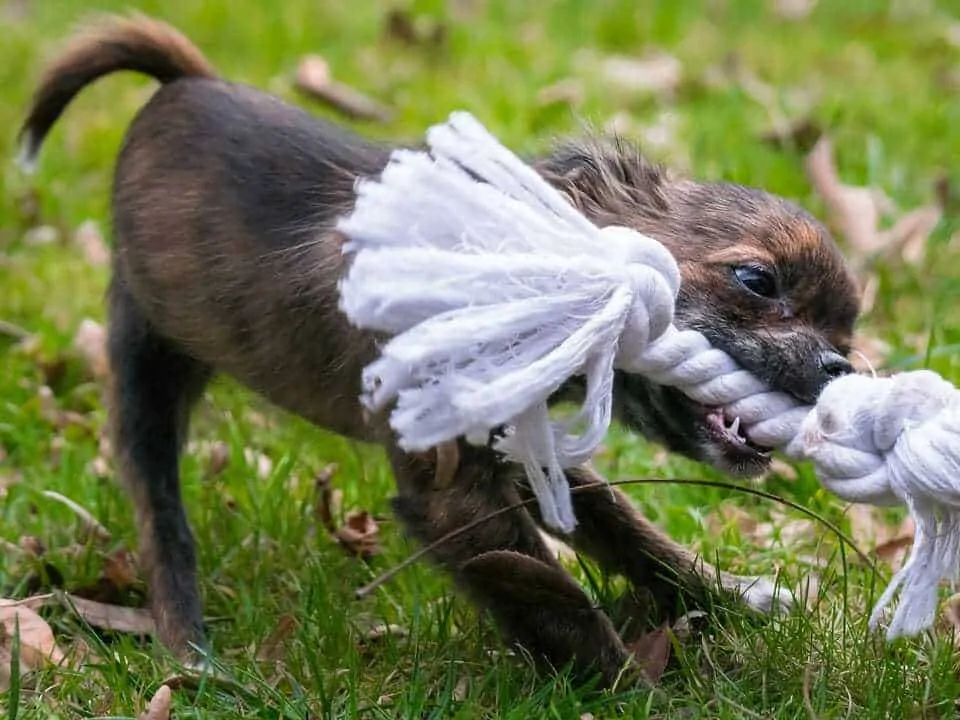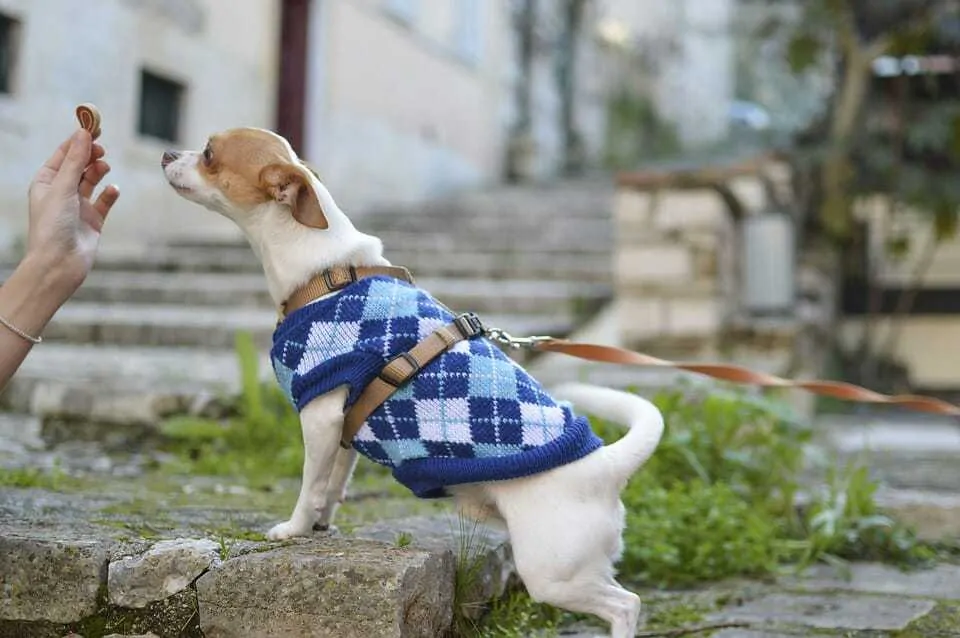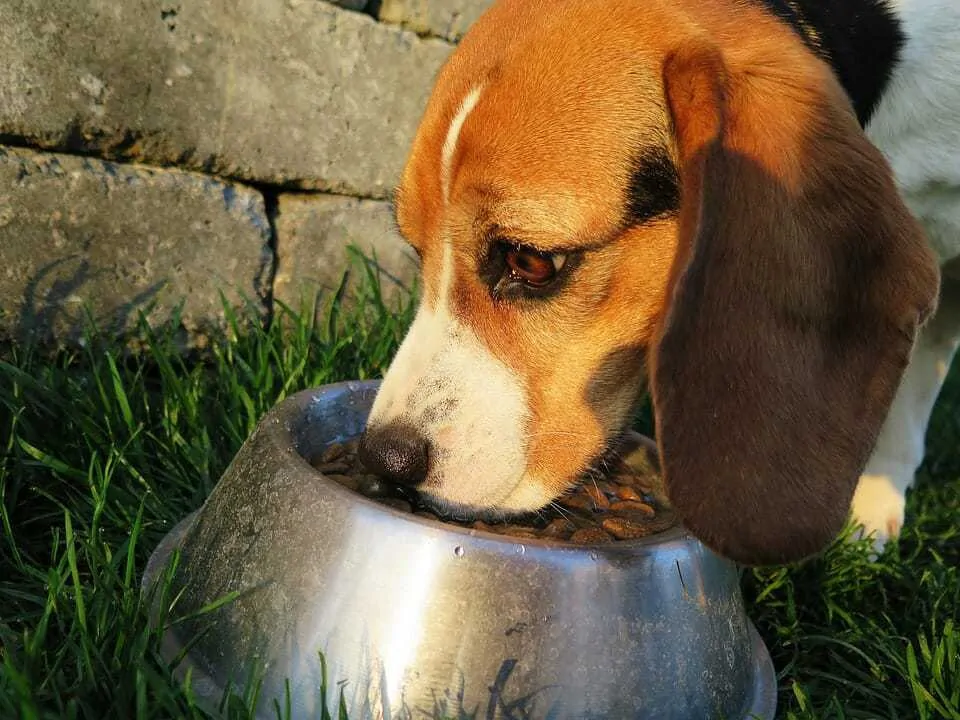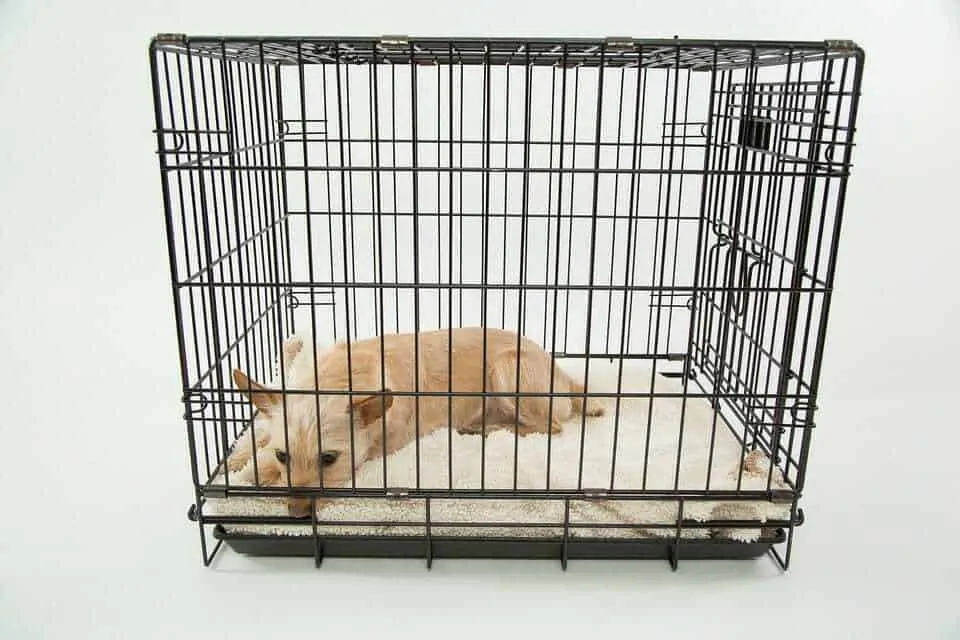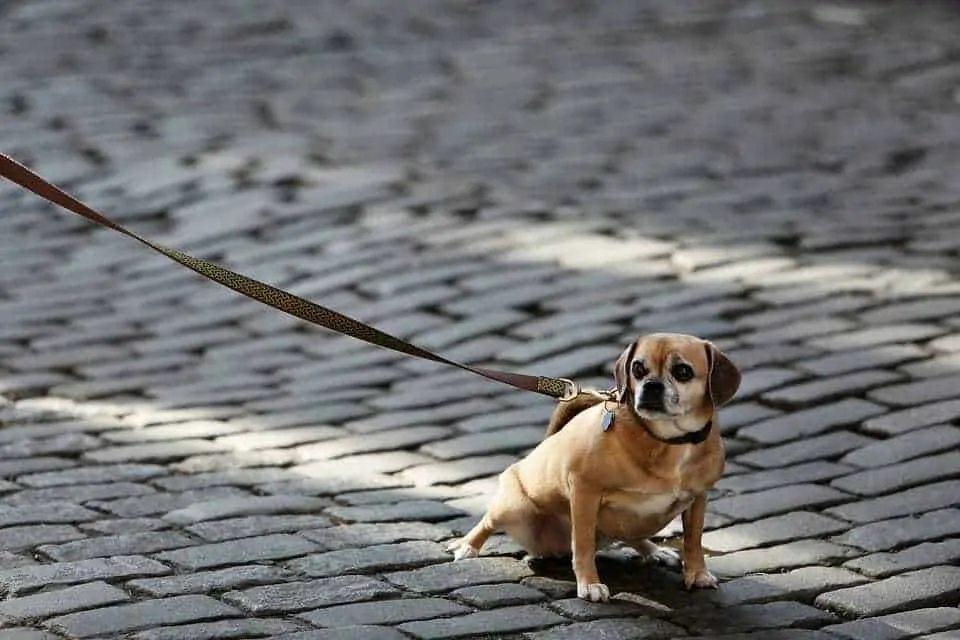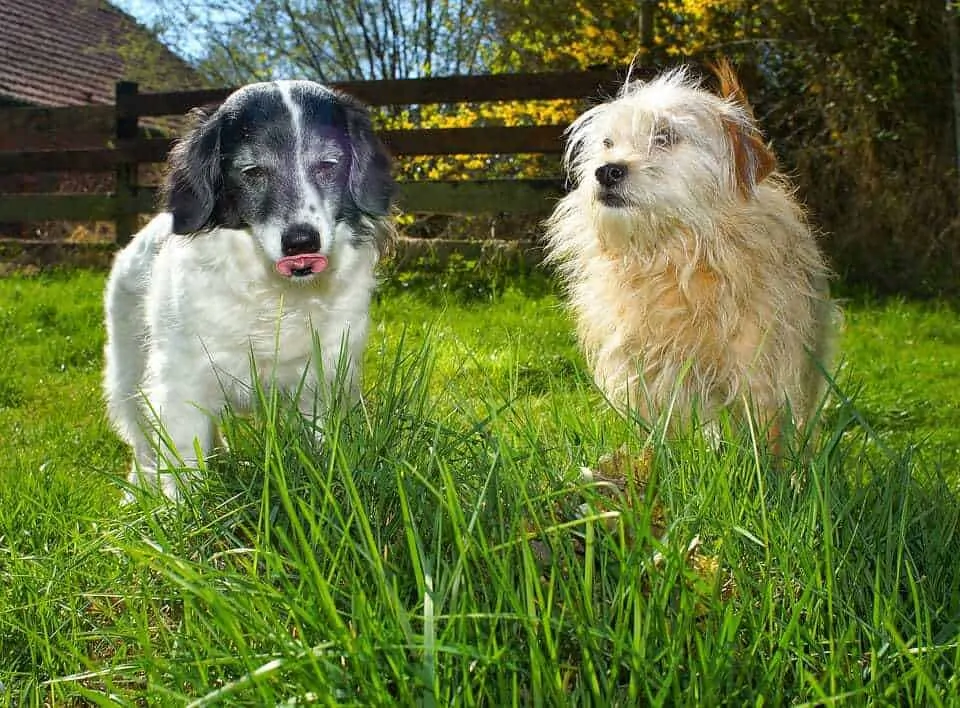Toilet training or house training a puppy is something that a lot of new dog owners can get frustrated with. It is not pleasant to come into a room and discover that your new puppy or rescue dog has had an accident on your brand new rug. Apart from the obvious of not giving your puppy access to a new rug you don’t want them to wee on, there are a few simple steps that, if applied consistently enough, will mean that your puppy will learn to be house trained in no time.
Your ultimate goal when house training your puppy is to have them learn that outside is the spot to pee
Contents
1. Get into a good rhythm when house training and be patient
Get into the habit of taking your puppy outside as frequently as you can when house training your puppy. If your puppy hasn’t gone for a while, if the puppy has had a period of particular excitement or playing, if the puppy just woke from a nap or if the puppy has been fed or had a drink recently, it may be time to take the puppy outside.
Be on the ball! If you have visitors, don’t forget to take time out for puppy pee breaks and take frequent trips outside, especially as all the excitement of new people may mean your puppy could struggle to hold on as long as normal. Or, if you have just returned home after a short period away, make sure that letting puppy put for a toilet break is the first thing you do and don’t encourage your pet to get too excited with your return either – this could result in an accident too.
Try to be as patient as possible and stay outside with your pet until they go. Often people just don’t give their puppy long enough. Stay out for at least five or ten minutes, even if the weather is miserable or your favourite programme is on TV. If your puppy is spending a lot of time sniffing, don’t discourage this as this often stimulates the desire to go. Ideally, you want to let the puppy be off lead. If the puppy has to be on a lead, try to use a long line or a flexi lead as the puppy are less likely to want to go when restricted on a short lead.
If your pet doesn’t like going out in bad weather, try to create a spot that is perhaps a bit more sheltered for your pet.
Don’t distract your dog with toys and games until your pet has done its business. To get this right, it is important in house training your puppy that you stay out with your dog the whole time. If you turn around and go inside your puppy might just focus on trying to follow you or, more importantly, your puppy may go whilst you are in and then you have missed your chance to reward them and train this positive behavior.
Don’t play with your dog in the garden until they have done the loo!
If you have been out for ten minutes with no success, we would recommend going back inside and then keep going out at ten-minute intervals until you have success. It may seem a bit of a pain, but it will really pay off in the long term!
If you have children and they are taking puppy outside, make sure they know the rules too and are respecting them. Inconsistency really sets back the training regime.
2. Praise is key with house training
When your dog does go to the loo outside it is really important to praise them enthusiastically and reward them immediately after they are done. Make sure you have a really tasty treat ready that you know your puppy loves.
It may take long periods of time to master but every time your puppy pees in the garden your puppy should be rewarded for it, so make sure you always remember to take treats out with you so you can practice positive reinforcement as you train your dog. This is the key to success.
You may also want to add a potty training cue. So when they are just finishing pottying you can say “good potty” and as they gradually get better with going outside you will hopefully be able to ask them to “go potty”.
Don’t forget to reward every time your puppy does the toilet outside!
3. Look out for signs your dog needs to go
It may take a while to notice but as you train your dog, if you notice that your puppy is starting to sniff a lot, circle in a particular area, move towards the door or become restless for extended periods of time, this could be a sign that he or she needs to go potty. If you are able to catch your puppy before he or she goes, take your puppy out into the garden as quickly as possible and get ready to reward your puppy for any success.
4. Avoid punishment
You may have people tell you that if your dog has a house training accident to rub their face in it and tell them off so that they know that they have been bad. This doesn’t work! Not only is it likely to make your dog frightened of you, but they will also just try to hide their accidents from you, for example, they may just start doing it behind your sofa or in a corner. This is especially true if you shout at them a long time afterwards – they won’t even associate the telling off with the accident.
Praising when they offer the right behaviour is the most effective way to guarantee success with toilet training. Don’t forget that, when you first take your new puppy home they don’t know that they are not allowed to go wherever they like. It is up to you to show your puppy what you want.
Toilet training is one of the first training exercises that you are likely to work on with a new puppy or rescue dog. To start off your training journey by punishing your dog, you are not getting off on the right foot. You want to strengthen your new bond with your pet and encourage trust. Puppies are like sponges and suck up everything they are exposed to with great sensitivity in those early days. By using positive training techniques you will avoid the possibility of making them more fearful at a crucial stage.
This is also important for rescue dogs, they may have had traumatic experiences in their past and they will likely have been anxious in the kennel environment. Treating them with kindness and positivity is so important.
5. Clean up REALLY well
If you don’t clean up an area that there has been an accident in, your dog may be more inclined to go back there again. We recommend a good stain and odour remover to ensure that any smells have been eradicated as much as possible. This really is an important part of the house training process. Dogs have a strong sense of smell and like to pick a pee spot. If you have not gotten rid of the smell completely, this can encourage your dog to go back there again. A normal disinfectant/cleaner is not usually enough, and sometimes is not safe for use around your pet anyway.
If you are finding you can’t stop your dog from going back to that same spot, no matter how much you clean it, then you may want to just try to restrict your dog’s access to the space until you have the outside toilet training sorted.
If you want to use items from around the home to clean up dog urine, we can recommend a vinegar and baking soda mix. Just mix up one cup of white vinegar, one cup of water and 2 teaspoons of baking soda and pop it into a clean spray bottle. Having used this before, we can confirm that this is a tried and tested formula.
Clean any house training accidents up really thoroughly to help avoid a repeat incident
6. Puppy Training Pads for House Training?
Our advice would be, if you don’t need to then it is always better not to. If your dog has easy access to the garden and there is someone around most of the time to take them out for frequent potty breaks during the day, then stick with this regime.
There may be the odd indoor accident with your pet but, as long as you clean up thoroughly and stick to regular trips outside and huge rewards when there is success, this is by far the best option. Using puppy pads or paper indoors can lengthen the period of time it takes to achieve complete outdoor potty training success. You are essentially training them to potty indoors and then having to redo the training to take them to potty outdoors.
We recognize there are circumstances that may necessitate the use of puppy pads when house training your dog. For example, you may live in an apartment block, have to leave your puppy unsupervised for a few hours in the early days or have mobility issues.
So initially, we recommend that you cover as large a space as possible with the puppy pads or newspaper. This increases the chances of your dog having success with going in a place you want them to.
As they start to reliably go on the pads, you can gradually reduce the number that you are using until you then only have one or two. Over time, there should just be enough space for your puppy to stand, turn around, and lie down.
If you are using newspapers, you may want to use a few sheets as they are thinner and less absorbent. Also be aware that newspapers, although much cheaper, can sometimes leave their print on the carpet once wet and this can be hard to remove.
Puppy pads can also be fixed into a specially designed tray. This reduces the chance of your puppy dragging the pad around the house, or ripping it up in play and also helps to catch any excess moisture that may leak through.
Once they are down to a single pad, this can then gradually be moved towards the door. You then work hard on encouraging only outdoor potty breaks and, as always, reward enthusiastically whenever this happens.
7. Keep Feeding Times Consistent When House Training Your Puppy
Try not to vary your dog’s feeding schedule too much otherwise it can make it more difficult for you to predict when they may need out. This is especially true if you have to leave your puppy on their own for short periods.
We don’t recommend leaving food out for your dog all the time either. Not only can it then be difficult to measure how much you are actually feeding, but it can then be difficult to move into a rhythm with regards to a toilet training schedule.
Free feeding is also not great in terms of exercise. We always recommend allowing an hour or so after eating a meal before exercising your dog to avoid the risk of tummy upsets or even twisted gut (bloat). If you are free feeding and the dog is unsupervised, it is hard to know when they last ate and how much they had.
Be consistent with the feeding schedule to help avoid unexpected accidents
8. Puppy pooping an awful lot?
Just like us humans, every dog is an individual when it comes to bowel movements. Some dogs will go just once or twice a day and others may go a bit more.
If you are finding your dog is going very frequently, if they are doing extremely large or very runny poos, then there may something else going on.
The first thing we would always recommend is to ensure that your dog is on a high-quality food and that you are not overfeeding. It is important to check the feeding guides and measure out your pups food in the beginning. If your dog is on a food that is poor quality, they often do not absorb the nutrients so well and this can result in copious amounts of large poop. Even some high-quality foods will just not agree with your dog and, if you are finding they are having softer poop, you may need to consider making a change.
If you are swapping puppy foods, we would always recommend doing this gradually, over a few days to a week. A sudden change in diet can also cause upset tummies with your puppy.
If you are persistently seeing soft poops/diarrhoea we would always recommend consulting with your Vet to rule out any underlying medical condition.
9. Think about water access too
Please don’t restrict your dog’s water access during the day in the hope that this will help them master toilet training more quickly! It is important that your puppy can drink fresh water when they need it. If your puppy seems to be drinking excessively, you should consult with your Vet. Otherwise, let them drink when they need it and then just be prepared to take them out on a potty break soon after.
Restricting access to water through the night can help minimise accidents overnight. Providing they have free access to water during the day, then you may want to consider restricting their access from around an hour or two before bedtime.
We would also recommend ensuring that the water in your pups bowl is cool but not freezing cold. Extremely cold water can sometimes cause a little chill in the bladder and can make your puppy need the loo more frequently.
10. What about when my dog is home alone?
You want to set your dog up for success. New puppies have smaller bladders and can’t hold on for long periods the way an adult dog can. Ideally, whilst you are getting a new puppy settled in, you don’t want to be leaving them on their own much. If you do have to be out for an extended period, perhaps you could ask a friend or family member to help out looking after your puppy.
If you do have to leave them for a short while, try to take them out for the loo immediately before you leave and then if they can be in a contained area, they will be less likely to do the loo in the space they are sleeping.
Some people choose to use a crate and crate train their dogs. This can work well but it is really important that your dog is comfortable being left in a crate and that they are not left for a prolonged period cooped up. Crate training overnight can also be useful for helping your puppy stay dry overnight more quickly if you crate train properly.
Crate training can help with potty training overnight or when left unsupervised. It is very important to make sure your dog is comfortable being left in it and that they are not left for prolonged periods
11. How long can I expect all this to take?
There is no exact timetable and no quick fixes for this training process. Every dog is different. Usually, it all of a sudden just clicks into place. Just remember patience, consistency and praise are key and if you are following all the steps above, you are setting your dog up for success. As time goes by, you should also notice that your pups bladder naturally starts to become bigger and stronger and that they are able to hold on for longer without needing a toilet break.
12. Walkies and potty time can be another challenge
If you have been working on toilet training in your garden and off the lead, sometimes it can take a bit of extra encouragement to have your puppy to start using a proper walk as an opportunity for a potty break.
Sometimes being on the lead can put your puppy off going to the toilet, some dogs like to have a bit of space or privacy. You may want to use a longer training lead to give them a bit more space. I love the Halti Training Leads, these are adjustable in length.
It can also just be a case of too much distraction. All the new smells and stimulation that your puppy is exposed to on a walk can mean that they just forget to think about potty time.
Sometimes a puppy may just think they are only allowed to go potty in the garden and not anywhere else.
The key here is to wait until you think your puppy will be needing to relieve themselves, take them out on a walk and if they do have success, as you always do, make sure you are ready to reward them profusely with praise and a treat. The more you do this, the more they are likely to go when on walks.
If you are taking your dog for a puppy playdate, try to take them to go potty before the dogs meet up. If they do potty whilst in the company of the other dog, don’t forget to still praise and reward.
Don’t forget that your dog might need a little extra encouragement to start going for a potty break when out on lead walks
13. Make allowances for older dogs
Sometimes elderly dogs may start to have accidents in the house when they never did before. Just like humans, senior dogs can start to have a less reliable bladder. It may just be as simple as making sure that you let them out more often than you previously did.
Don’t forget that your elderly dog may need out more frequently than they did when they were younger
14. Check for underlying medical issues
It is also important to get your dog checked out for any underlying medical conditions if they suddenly start to have accidents in the house. This may be something that is treatable and things will improve but, if it is something that just needs to be managed, you may need to consider introduced house training pads, doggie diapers or belly bands as a longer-term option.
House training a puppy doesn’t need to be difficult. Hope our guide was helpful!
Good Luck!
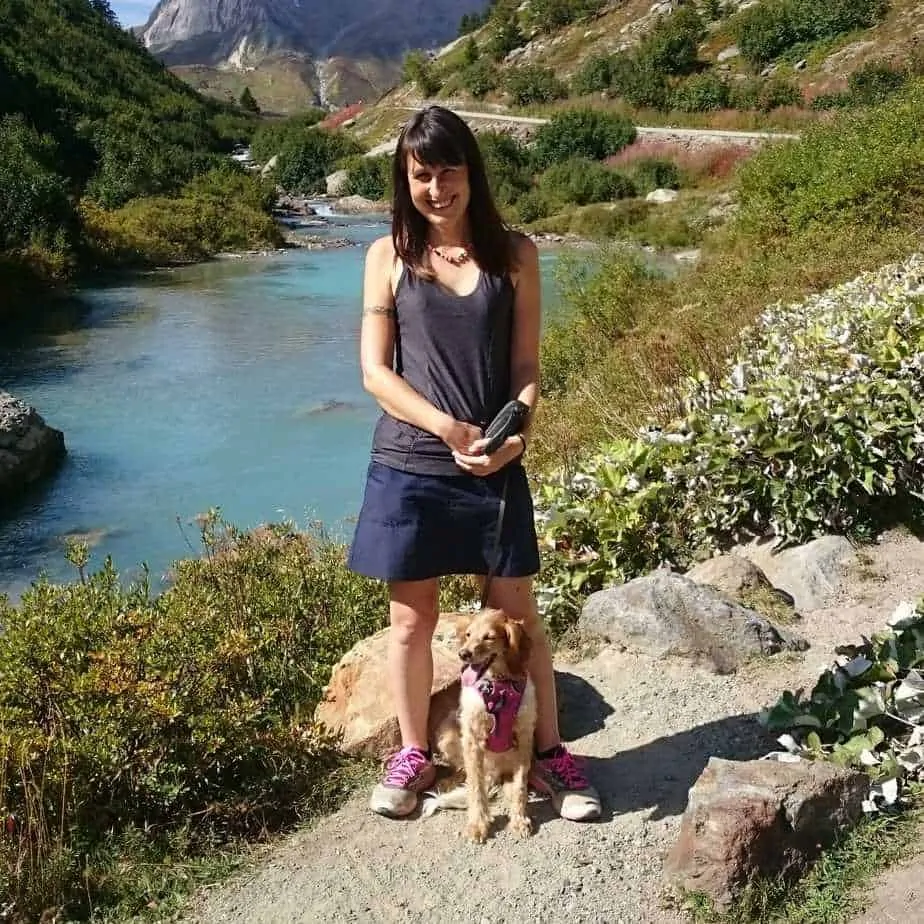
Gemma is an official dog nut and passionate traveller. Originally from the wonderful city of Edinburgh in Scotland, Gemma is now wandering across Europe with her rescue dog Annie. For ten years Gemma loved being surrounded by all things canine 24/7 whilst she ran a specialist doggy shop. The shop was a great community hub and, along with working closely with local rescues, Gemma provided customer support relating to canine behaviour and nutrition. It was a passion project and one that Gemma felt privileged to have created. She is also studying towards an Advanced Diploma in Canine Behaviour and is a huge advocate of dog rescue and promoting scientific methods of dog training.
